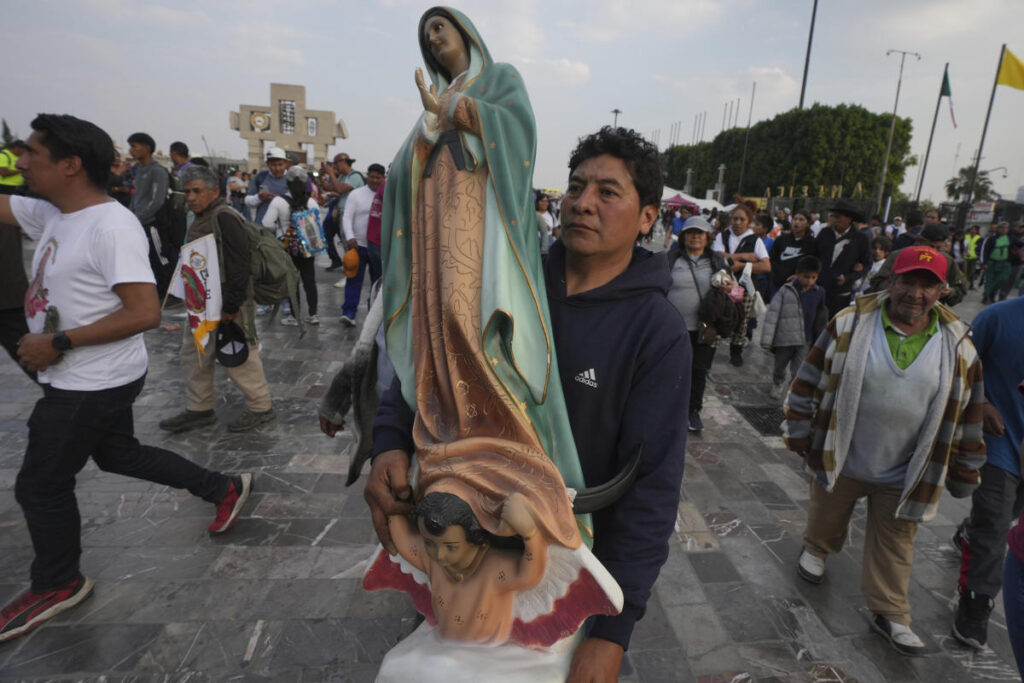On December 12, millions of faithful in Mexico gathered to celebrate the Virgin of Guadalupe Day, a significant occasion honoring the country’s patron saint, whose apparition in 1531 marks a pivotal moment in Mexican Catholic tradition. The festivities were marked by vibrant cultural expressions such as singing the traditional birthday song “Las mañanitas,” alongside the performances of mariachi bands and dance groups, all within the striking setting of the Basilica of Our Lady of Guadalupe. This year, the event held an added poignancy as the country grapples with rampant cartel violence, leading church officials to call for a truce amidst ongoing bloodshed.
As the celebrations unfolded, heartfelt stories emerged, such as that of María Luisa Vázquez Mendoza, who trekked for 16 hours from the State of Mexico to express gratitude for her family’s wellbeing. Her emotional response at the sight of the basilica illuminates the personal significance of the celebration for many pilgrims, who often endure long journeys, cold temperatures, and fatigue to pay homage to the Virgin. Vázquez Mendoza’s experience resonates with a deeper yearning for peace and human connection in a country increasingly marked by violence.
Sadly, the day’s festivities were overshadowed by stark reality, particularly in Guanajuato, a region notorious for cartel-related bloodshed. On the same day, authorities discovered 15 bodies across various cities, indicating a continuation of the violence plaguing the area, which recorded an average of 8.5 homicides daily in 2023. This jarring juxtaposition of faith and violence highlighted the urgent need for reconciliation, as articulated by the Mexican Council of Bishops. Their editorial emphasized the devastating impact of violence on families and called for a collective reflection towards fostering human dignity and peace.
Despite the grim news from Guanajuato, the Basilica in Mexico City saw an influx of over 11 million visitors in the lead-up to the celebration. Many pilgrims traveled from distant locales, some undertaking the journey by foot, while others chose bicycles or buses to reach the revered site. The overwhelming turnout speaks to the deep-seated faith and cultural significance attributed to the Virgin of Guadalupe, whose image continues to serve as a unifying symbol for many Mexicans.
Pilgrims also participated in various forms of devotion, with some walking the last stretch to the Basilica barefoot or on their knees, showcasing a profound sense of gratitude and need for divine intervention. Street vendor Christofer Hernández’s dedication exemplifies the lengths to which devotees will go to express their reverence. Arturo Rivas captured the enduring spirit of the pilgrimage as he embarked on a substantial bike ride from Tlaxcala, indicating that such spiritual journeys are not just personal but also deeply rooted in family traditions and cultural heritage.
Ultimately, the celebration of the Virgin of Guadalupe Day encapsulated both the enduring love for the patron saint and the longing for peace in the face of persistent violence. As Mexico navigates its complexities, the call for a truce resonates on this sacred day. While the streets in Guanajuato can tell harrowing tales of loss, the Basilica remains a sanctuary for hope, faith, and reconciliation, inviting millions to continue their quest for a peaceful coexistence amidst the chaos surrounding them.

